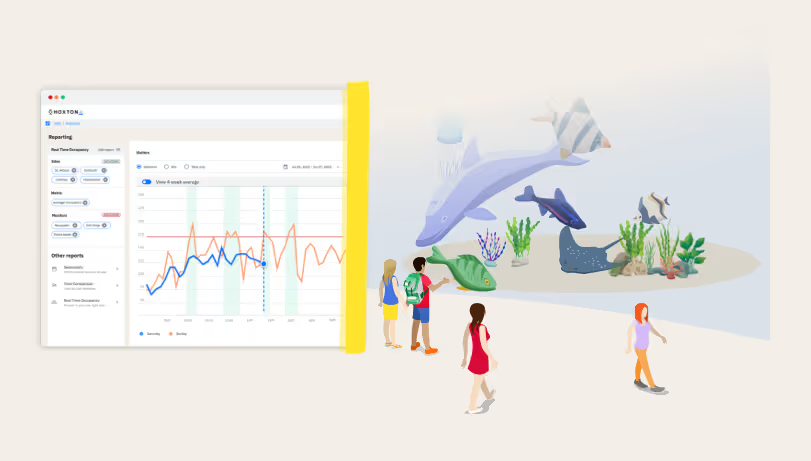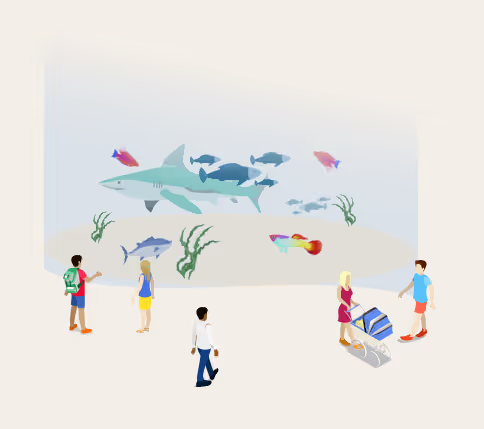The Aquarium of Niagara is located in downtown Niagara Falls, New York and houses more than 30 exhibits. Visitor numbers can fluctuate, so it’s important they maintain a great experience but never restrict capacity unnecessarily.
The aquarium welcomes visitors year-round from a mix of members and non-members. The seasons, day-to-day weather and even Covid regulations can affect visitor numbers. Like any great guest attraction, the Aquarium of Niagara wants to let as many people visit as possible, whilst maintaining a positive visitor experience.

Tasked with achieving this goal was Kim Barrus, Director of Guest Experience.
Timed entry slots.
To better manage flow Kim had tried timed slots for entry but found that the challenge was knowing:
(a) how long to make a time slot?
(b) what the right number of tickets per slot should be?
Without feedback on what was working best, they found it hard to iterate the process.
The Aquarium of Niagara has installed three HoxtonAi sensors and the process could not have gone more smoothly!”
Occupancy is the key.
Ticket sales and entry numbers were only half the story. Kim noticed that visitors stayed for different durations depending on factors such as the time of day, day of the week and even the weather, meaning there was potentially excess unused capacity for visitors. To address this, there was a requirement to count ‘outs’ as well as ‘ins’ and calculate ‘occupancy’ overall.
They needed something that worked ‘out of the box’ to help them understand visitor flow into the aquarium, i.e. what the most popular days and times are, how long people are staying for per visit, and where the occupancy gaps are.
When Kim came across the HoxtonAi Occupancy Monitoring solution she decided to test it out as the 30-day return period meant they didn’t have to take a risk to see their own data. The sensors shipped within the week and were installed in no time.
...utilizing the occupancy counter has saved our staff a lot of time and effort of having to stop what they are doing to count the guests in the building."
It was apparent straight away that the occupancy monitoring solution would give them the data points they were looking for. The real-time data highlighted when people were leaving and therefore when they could admit more visitors. They no longer had to restrict demand unnecessarily.

After some weeks of collecting data, they were able to analyse the trends using the dashboard. Kim was able to see visitor flow across different days of the week and found that they could release more tickets for times of the day when people stayed for shorter periods. Conversely, they could release fewer tickets when people are likely to stay longer. By keeping close to their desired capacity they are able to ensure that they maximise tickets whilst also ensuring the best visitor experience.
Kim and her team now report internally on occupancy, and their staff and management are confident that they are efficiently using their space.
We are able to allow more guests in as we now rely on the sensors and know exactly where we are at in our occupancy.”
%20(1).png)





